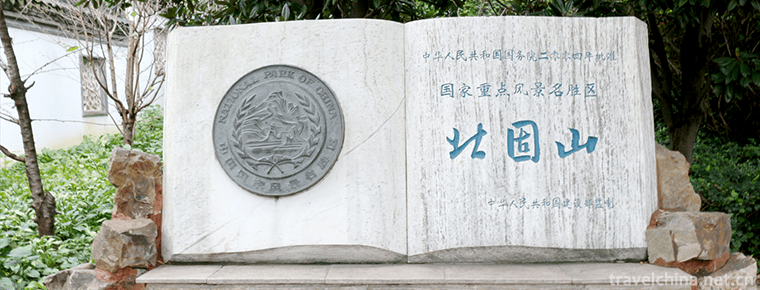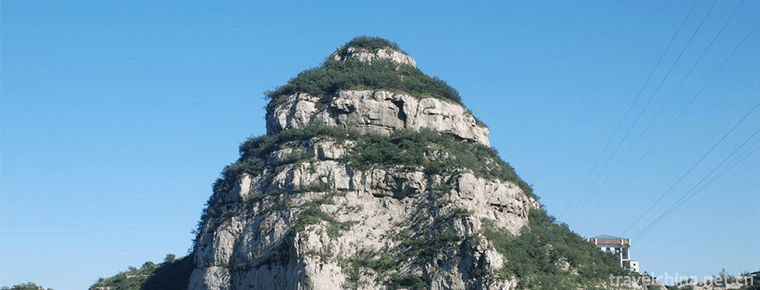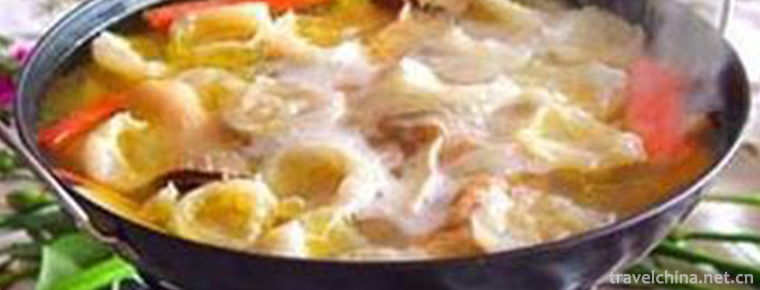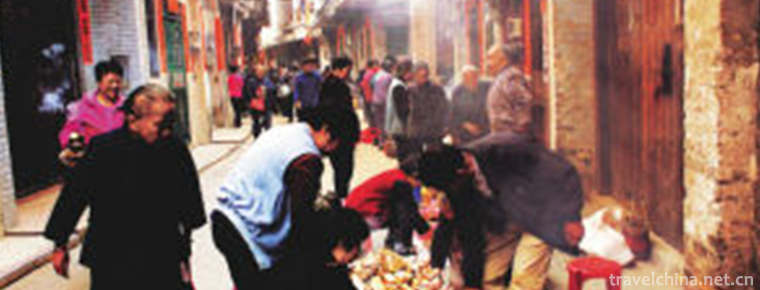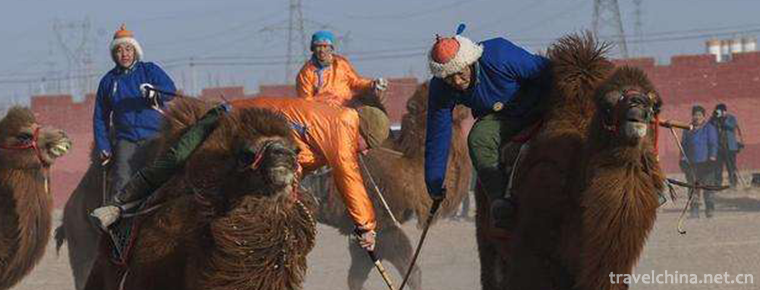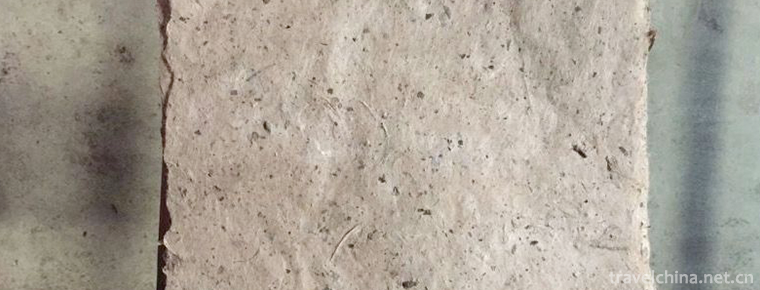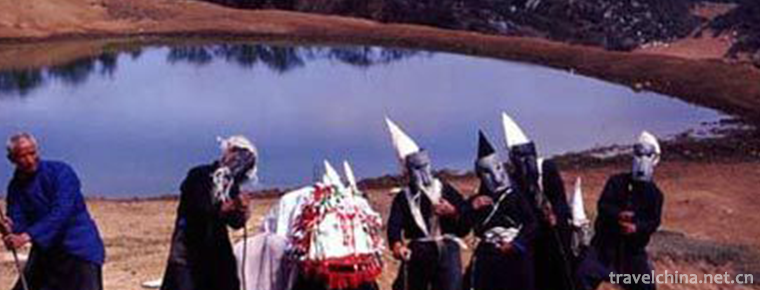Shoushan stone carving
Shoushan stone carving
Shoushan Stone Carving, a local traditional art in Fuzhou City, Fujian Province, is one of the national intangible cultural heritage.
Shoushan Stone Carving is a traditional folk carving art. It is made of Shoushan Stone, which is produced in the northern mountain area of Fuzhou. It is a small carving for people to enjoy through special techniques. Shoushan Stone Carving pays great attention to stone sculpture, so it has the theory of "one to nine" and its skills are mainly spread in Gushan, Yuefeng Town, Xiangyuan, Wangzhuang Street and Shoushan Township of Jinan District, Fuzhou City. Shoushan stone carving techniques are rich and varied, exquisite and skillful, and are widely developed in the process of development, blending the carving skills and artistic essence of Chinese painting and various folk crafts. Shoushan stone carvings have a wide range of themes, including characters, animals, landscapes, flowers and birds.
On May 20, 2006, Shoushan Stone Carving was approved by the State Council of the People's Republic of China to be included in the first batch of national intangible cultural heritage list, the heritage number_-35.
historical origin
Northern and Southern Dynasties
The origin of Shoushan stone carvings was gradually advanced by the discovery and identification of archaeology. The oldest stone sculpture relics unearthed so far in Shoushan should be the Northern and Southern Dynasties (420-589 A.D.). In 1954, a tomb of the Southern Dynasty was found on the construction site of the Fujian Teachers College in Cangshan District, Fuzhou. The stone pig was 1.1 centimeters long, 6.4 centimeters long, and lying in a low position. It was carved from the rectangular stone hill of Shoushan, Fuzhou. Its lines, knife methods were concise, and its form was rough. In the past ten years since 1956, similar Shoushan stone piglets have been unearthed from fifteen tombs of the Six Dynasties in Fuzhou. In 1965, a similar stone pig was excavated in a Southern Dynasty tombs excavated at the two Fengshan site in Beijiao, Fuzhou. At the same time, there was also the tomb brick of "twenty-two years of Yuan Jia". In the 22nd year of Yuanjia, 445 AD, it can be proved that Shoushan stone carving art began at least 1500 years ago.
Tang and Song Dynasties
During the Tang Dynasty, the national economy was prosperous, Buddhism was prosperous, Daxing temple buildings and Shoushan stone carvings were also developed rapidly and maturely in this period. In the Southern Song Dynasty, Shoushan Stone Mine was mined. From the two books of Guanshilu, we can see that Shoushan Stone was mined in large quantities in the Song Dynasty. Professional and non-professional stone carving teams were formed, and Shoushan Stone Carving was also listed as a tribute.
Between Yuan and Ming Dynasty
Before the Yuan Dynasty, most seals were made of copper, iron and jade. Between the Yuan and Ming Dynasties, the popular folk seal carving with "lactose" came into being, Shoushan stone carving was clean as jade, soft and easy to attack. It was highly appreciated by calligraphers, painters and seal carvers. Since then, seal carvers have played their own knives, followed the imitation of the Han Dynasty, mottled and incisive, and China's unique seal carving art has become popular and developed. "Ten thousand clouds and clouds have climbed a few degrees, and jewelry has become popular among thousands of families in Anhui and Zhejiang. Yintan is Shoushan". Mr. Qian Juntao, a famous modern epigrapher, highly appraised Shoushan Stone's achievements in the history of seal carving art.
Ming and Qing Dynasties
Qing Dynasty is the prosperous period of Shoushan stone carving. According to historical records, Yongzheng Shoushan stone carving has been included in the taxation scope of the government. The art of carving is applied according to the aptitude. Seals, stationery, figures, animals and jade are inlaid with various utensils. The button decoration of seals is more exquisite and diverse. There are Yin carving and chain techniques in the performance techniques. A set of "treasure seals" used by Emperor Qianlong is to use a piece of seals. Tianhuang carved and connected by two chains with three seals! Excellent skills, can be called a national treasure.
In Ming Dynasty, the button decoration art of Shoushan Stone was greatly developed. On the basis of inheriting ancient jade seals, bronze seals and other button decorations, the sculptor had a high attainment and unique style. Shoushan Stone Seal became the favorite thing and treasure of literati and mohists. As a result of the appearance of stone seal button decoration, Shoushan stone carving technology has undergone great changes and development. The methods of cutting tools, gripping knives and moving knives have changed. In the past, stone figurines were carved mainly with long knives with wooden handle on their shoulders. The knives show more straight lines. This method is obviously not suitable for small seal buttons. The knives have evolved into hand chisels and trimming knives. They are completely mastered by hand, such as the operation of knives. Pen, knife method is rigid and soft, gentle and fluent, the image is graceful and more perfect. At the same time, influenced by Chinese painting, high relief techniques, elegant and clean wrinkling methods, and really picturesque, Shoushan stone carving has formed a unique artistic style since then.
Inheritance and Protection
Inheritance value
The stone quality, color, shape and pattern of Shoushan Stone are very different. There are many kinds of Shoushan Stone, which has high aesthetic value. In addition, stone carving artists apply their skills according to their aptitude, and integrate the simple and meaningful emotional interest into their works. Therefore, Shoushan stone carving works generally pursue the aesthetic characteristics of material beauty, craft beauty and artistic conception beauty.
Shoushan stone carving occupies a prominent position in Chinese traditional jade culture. The related carvings have become a symbol of elegance, exquisiteness, dignity and wisdom. Shoushan stone carving pursues the artistic effect of both carving and carving, and advocates returning to pulp and returning to reality. Therefore, taking "phase stone" as an important link, it pays attention to utilizing stone shape and color and skillfully applying techniques in order to achieve the realm of "the unity of heaven and art".
Current situation of inheritance
Shoushan Stone is a rare stone. Its resource management has been in disorder in recent decades, resulting in excessive mining, which has a negative impact on stone carving. At present, many old artists are getting older and unable to continue sculpture, while the traditional relationship between teachers and inheritance has been destroyed. Shoushan stone sculpture skills have no successors and are facing the danger of losing their heritage. It is urgent to rescue them.
Heritage figures
Feng Jiuhe, male, Han nationality, born in Fuzhou, Fujian Province in 1928. The first batch of national intangible cultural heritage projects Shoushan stone carving representative inheritor, master of Chinese arts and crafts, Research Fellow of folk creation of China Academy of Art.
Lin Hengyun, male, Han nationality, born in Fuzhou, Fujian in 1930. The first batch of national intangible cultural heritage projects Shoushan stone carving representative inheritor, master of Chinese arts and crafts.
Chen Lizhong, male, Han nationality, representative successor of Shoushan stone carving, the fifth batch of national intangible cultural heritage projects.
protective measures
Fujian Shoushan stone carving production unit has developed from traditional Fuzhou area to more than 10 counties and cities, employing more than 200,000 people. All kinds of exquisite stone carving products are sold in Taiwan, Hong Kong, Japan, Southeast Asia, Europe and America and other countries and regions. Relevant departments have intensified efforts to publicize, support and protect Shoushan Stone. Not only has Shoushan Stone Culture Village and Shoushan Stone Art Museum of China been established in Shoushan Stone's producing area to support Shoushan Stone Carving Art Creation, but also to delimit the scope of protection and prevent overexploitation.
social influence
Important Exhibitions
On December 3, 2015, Fujian Non-Heritage Exhibition Hall held "Fujian Non-material Cultural Heritage Exhibition", which exhibited more than 20 non-heritage categories such as Shoushan Stone Carving, Fuzhou Bodiless Lacquerware, Dehua Porcelain and Xiamen Lacquer Line Carving in Fuzhou.
Cultural anecdotes
There are many beautiful legends about the formation of Shoushan Stone. Some said that Nuwa had passed Shoushan by Butian in that year, and was intoxicated by the beautiful scenery of the mountains and rivers here. She danced lightly and scattered the five-color stones on the hillsides, streamsides and fields here, turning them into this brilliant gemstone. Some say that in ancient times, a phoenix godbird's egg liquid infiltrated into the ground near Shoushan and became Shoushan Stone.
Another way of saying is that Shoushan was not called Shoushan at first. What other name was it? Nearby there lived a young woodcutter named Chen Changshou. Chen Changshou likes to play chess since he was a child, and he is very skilled in chess. One day he went up to the hill to cut firewood and saw two old white-haired men playing against a big stone on the top of the hill. Chen Changshou came to watch the battle with a burden on his shoulders. When the two old men saw that the young man was so absorbed that he seemed to be quite good at chess, they invited him to play games. Chen Changshou did not delay, so he sat down and handed in with the two elders. Although the two veterans are good at chess, they don't want to be won by the young man in several games. An old man twisted his long beard and said with a smile, "I can't imagine that there are such good hands in the world. The old man admires them, admires them!" When the two elders saw that the clothes of longevity were simple and they chopped firewood for a living. They were quite poor and pitied. They gave the chess pieces to longevity and told him that he would not have to go up to the mountains to chop firewood for a better life in the future. After that, I just felt a breeze blowing on my face, and there was no trace of the two old men.
Chen Changshou took the chess pieces sent by the two elders to carry the burden home. Walking on the road accidentally fell, hands of the chess pieces scattered on the ground, strange to say, one by one of these chess pieces immediately turned into colorful stones, big stones and small stones, can not be picked up. Chen Changshou told his wife about it as soon as he got home. So their husband and wife go up to the mountain every day to pick up stones and dig them. They took the stones they had picked up to the market and sold them. They didn't want to be bought all at once. They got a lot of money so that their couple's life would be better. It was not long before everyone in the neighborhood knew that everyone went up the mountain to look for stones. Later, people called the mountain Shoushan, and the gemstone they had turned into was Shoushan Stone. Zhu Yizun, a poet of the Qing Dynasty, wrote poems praising that "the treasure of heaven is born in Minzhong".
However, folklore is, after all, a legend that the real reason for Shoushan Stone's formation is the result of crustal movement in ancient times. Shoushan Stone was formed between more than 100 million and 200 million years ago, when violent crustal changes took place in Shoushan area, forming volcanic eruptions. Shoushan stone itself is also the result of volcanic activity, but this kind of volcanic rock is relatively special. It did not form a large-scale eruption, but a small-scale volcanic magma is active, and mixed with groundwater and underground minerals to form a substance called hydrothermal fluid. This liquid is squeezed through the fault crevice of the stone, and slowly seeps out, and then solidifies to form Shoushan stone. 。 From the formation of Shoushan Stone, we can know that Shoushan Stone grows in the cracks of rock strata. It can not be mined one by one, but can only be slowly found in the cracks.
Because Shoushan stone mining is difficult and rare, it seems particularly precious, especially Tianhuangshi, which is difficult for ordinary people to obtain. Since ancient times, Fuzhou folk has said that "gold is easy to get Tianhuangdan", "one or two Tianhuangshan, two gold" and so on.

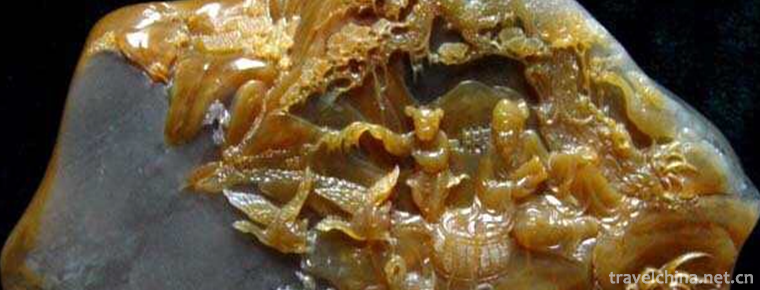
-
Ancient town of Shaxi
Shaxi is located in the southeast of Jianchuan in Dali, Yunnan Province, China.
Views: 215 Time 2018-10-17 -
Beigushan HillBeigu Mountain
Beigu Mountain, one of the three scenic spots in Zhenjiang, overlooks Beigu, pillows the river, rocky walls, and the mountain is dangerous, so it is named Beigu Mountain.
Views: 118 Time 2018-12-06 -
Tianmu Lake
Tianmu Lake is located eight kilometers south of Liyang City, Changzhou. It is named Tianmu Lake because it belongs to the remnants of Tianmu Mountain.
Views: 109 Time 2018-12-06 -
Bao Zhai village
Baoqiao Village, formerly known as Baoqian Mountain and Qishan Mountain, is located in Luquan District of Shijiazhuang City, 16 kilometers away from Shijiazhuang, the provincial capital.
Views: 194 Time 2019-01-02 -
Fish Swallow in Bazhen Fresh Soup
Ingredients: Six or two fish swallows are served well. Lentinus edodes, crab willow, Jinhua ham, clam, shrimp.
Views: 200 Time 2019-03-27 -
Liaobu fragrant Market
Liaobuxiang City is a traditional folk activity. During the Wanli period of Ming Dynasty, the scent of Guanxiang perfumed over Liaobu Town in Dongguan every day. Numerous guanxiangs were transported f.
Views: 173 Time 2019-05-13 -
Burning Techniques of Linqing Gong Bricks
Linqing fired tribute brick is an ancient handicraft. Beginning in the early Ming Dynasty, Yongle's firing technology is the unique experience accumulated by the working people in Linqing of Shandong .
Views: 94 Time 2019-05-13 -
Mongolian camel ball
The intangible cultural heritage is the manifestation and cultural space of various traditional cultures which are inherited from generation to generation and closely related to people's life. .
Views: 161 Time 2019-06-04 -
Mianzhu Wood Engraving New Year Picture
Mianzhu New Year Picture, also known as Mianzhu Wood Printing New Year Picture, is one of the Chinese Folk Woodcut New Year Pictures. It is named for Mianzhu City, Sichuan Province.
Views: 65 Time 2019-06-04 -
Legend of the ancestors of Khitan
The legend of the ancestors of Qidan is a folk legend that is spread in Pingquan County, Hebei Province, China. According to legend, the ancestors of Qidan were born on the Futu River in Mayushan.
Views: 111 Time 2019-06-10 -
Mulberry Paper Making Skills
Mulberry paper is pale yellow. Mulberry paper with exquisite craftsmanship has obvious fiber structure. Mulberry paper is basically used as the page in local government books and books formed in Ming .
Views: 131 Time 2019-06-12 -
Taiji of Yi Nationality
Qitaiji is an ancient form of drama that only exists in Nugazhai village, Bandi Township, Weining Yi Hui Miao Autonomous County, Guizhou Province. Taiji is the transliteration of Yi, the word "Qi.
Views: 398 Time 2019-07-12

